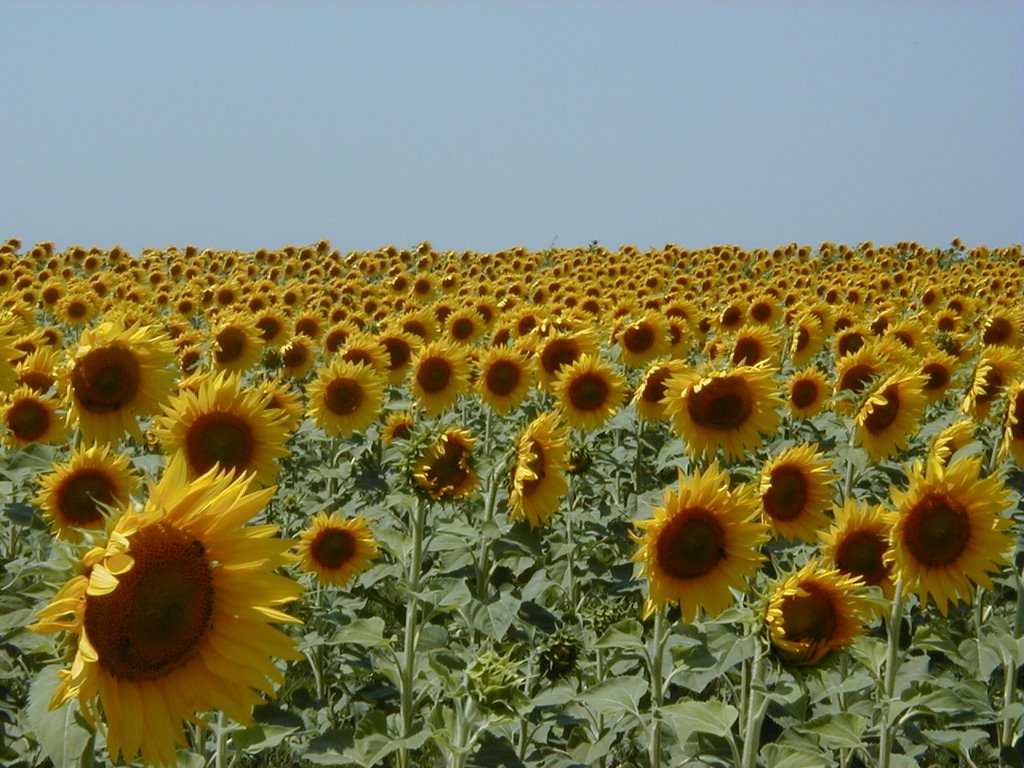Sunflower prices down 22%, agriculture prices down 13.7%

New statistics released by the Central Statistics Office (KSH) on agricultural producer prices were quite stunning, with massive drops in crop products well outweighing increasing prices in livestock and animal product for an overall drop of 13.7% year-on-year.
In September 2013, agricultural producer prices decreased by 13.7% compared to a year earlier. Within this, the price of crop products was cut by 22.8%, while that of live animals and animal products rose by 4.7%.
For the January to September period, the price level of the means of agricultural production was 4.6% higher than in 2012.
In September 2013 the price of cereals was 32.2% lower than one year earlier. The procurement price of wheat was essentially unchanged from July, but was 32% lower year-on-year. The price of maize has decreased continuously since January, falling 13% month-on-month in September. That month closed with the price of wheat at HUF 44,000 per ton and maize at HUF 42,700 per ton.
The price of industrial crops decreased by 21.7% y.o.y. in September, within which that of oil seeds was 24.6% lower. The procurement price of sunflower was down by 22% m.o.m. to HUF 96,600 per ton. The price of vegetables grew by 7.3% and that of potatoes by a big 57.0% y.o.y., while the price of fruits was essentially unchanged.
The producer price level of animals for slaughter was 1.9% higher y.o.y. The procurement price of cattle for slaughter was reduced by 21.8%. The producer price of pigs for slaughter rose by 4.4% over 2012 to HUF 435 per kilogram. Poultry prices increased the lower rate of 3.6%.
The price of animal products was up 12.0% y.o.y. The producer price on milk grew by 20.6%, while that of fresh eggs was cut by 13.5%.
In the nine-month period, agricultural producer prices were unchanged on the whole. In the first half of 2013, a double-digit price increase was recorded, but the sales of this year’s cereals and sunflower considerably reduced the cumulated prices of crop products. Declines of 4.4% and 13.4% were recorded in the prices of cereals and oil seeds, respectively. The price of potatoes grew dramatically, by 94.8% in this period, while vegetables were up 8.8% y.o.y. On the whole, the price of crop products decreased by 2.6% compared to the first nine months of 2012.
The prices of live animals and animal products went up by 4.8% y.o.y. for the nine months. The price of poultry for slaughter continued to increase at the highest rate (9.7%), while the price of cattle saw the biggest drop (18.9%). The price index of milk has grown continuously in 2013, rising by 10.4% for the nine months,
In January-September 2013, the prices of agricultural production means were up 4.6% y.o.y., which was made up for the 5.1% increase of the price level of goods and services currently consumed in agriculture and the 1.6% rise of the price level of goods and services contributing to agricultural investment.
Although within goods and services currently consumed in agriculture the 13.5% price increase of animal feed was dominant in the first three quarters, the prices already decreased from July. The prices of animal feed were 2.7% lower y.o.y. in the third quarter, within which the price of simple feed decreased by 10.0%, while that of compound feed was up by 3.1%.
SUPPORT THE BUDAPEST BUSINESS JOURNAL
Producing journalism that is worthy of the name is a costly business. For 27 years, the publishers, editors and reporters of the Budapest Business Journal have striven to bring you business news that works, information that you can trust, that is factual, accurate and presented without fear or favor.
Newspaper organizations across the globe have struggled to find a business model that allows them to continue to excel, without compromising their ability to perform. Most recently, some have experimented with the idea of involving their most important stakeholders, their readers.
We would like to offer that same opportunity to our readers. We would like to invite you to help us deliver the quality business journalism you require. Hit our Support the BBJ button and you can choose the how much and how often you send us your contributions.








